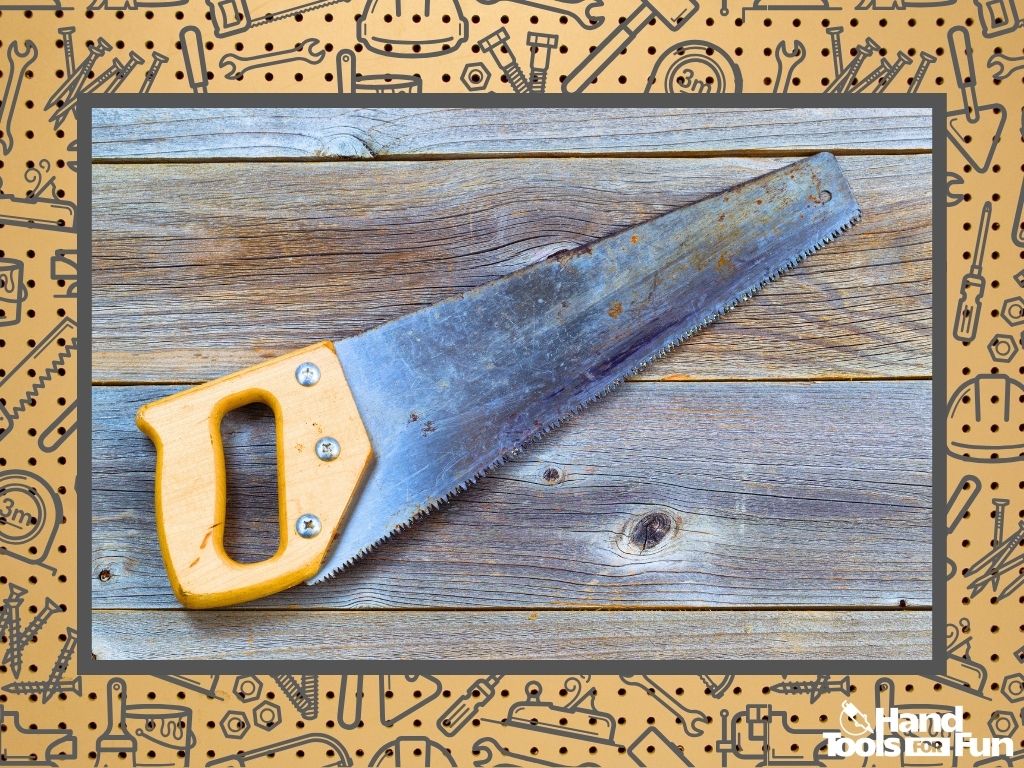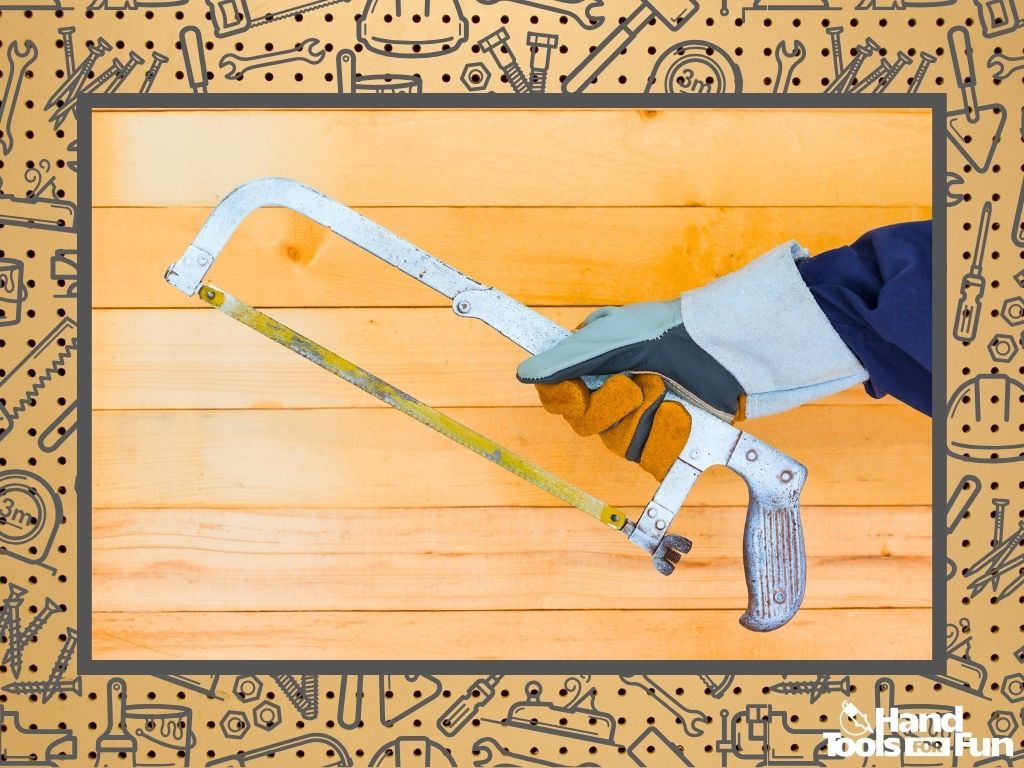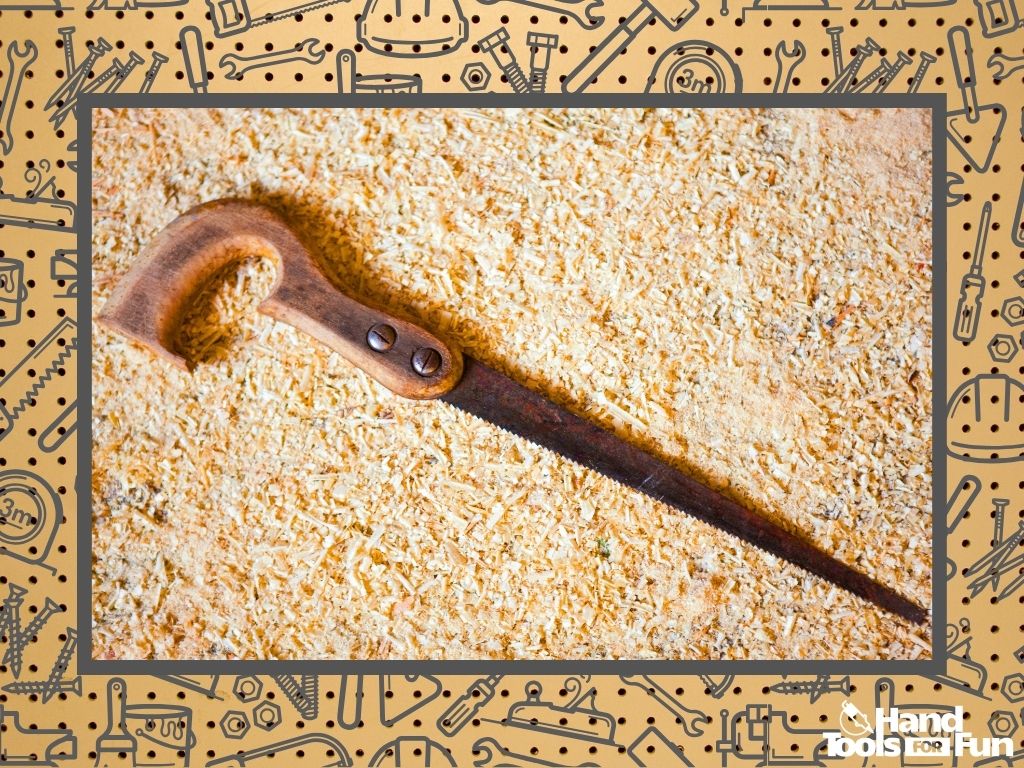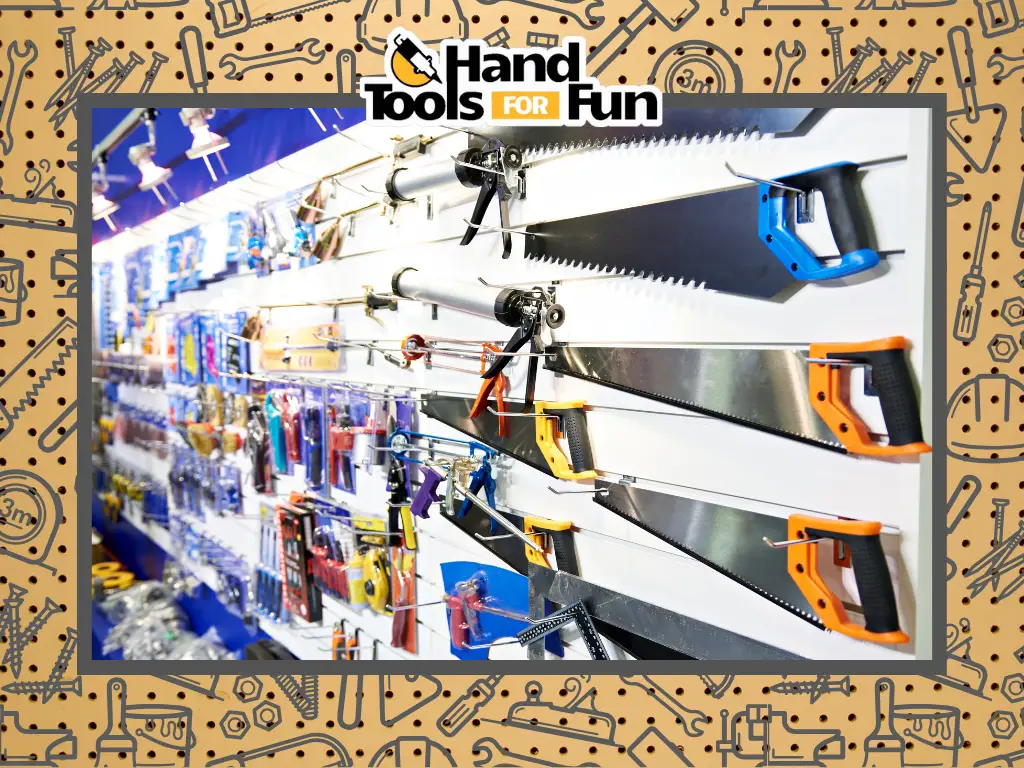Embarking on the exhilarating journey of woodworking and crafting brings with it the necessity of understanding the tools of the trade meticulously, among which hand saws hold an unparalleled significance.
Comprehending the types, discerning the quintessential features and conducting effective price comparisons between renowned brands and generic alternatives forms the fulcrum of any wise investment decisions in this field.
This deciphering of the economical layers surrounding hand saws will empower enthusiasts and hobbyists to navigate their way proficiently through the market, ensuring they secure the ideal tool that fits both their project requirements and budget.
So How Much Does a Typical Hand Saw Cost?
Short answer… $5 to $50 USD
Buying Guide:

Types of Hand Saws
Exploring the World of Hand Saws: Types and Their Pricing Influence
Hand saws, invaluable tools in woodworking, display an astonishing variety in terms of shape, size, and functionality. Indeed, choosing the right hand saw can seem daunting for those new to woodworking.
To make it a tad easier, let’s go ahead and delve into the world of hand saws, examining the different types available and how these variations influence pricing.
Arguably the most familiar type of hand saw is the Rip Saw. Robust and versatile, the rip saw is often the first on the list for any beginning woodworker’s toolbox.
Rip Saw

With its hearty build and teeth designed for cutting along the grain of wood, it’s an incredibly effective tool.
However, the abundance and simplicity of rip saws usually mean they’re fairly priced and won’t burn a hole in the wallet.
Close on the heels of the rip saw is the Crosscut Saw. This hand saw is specifically built to slice across the grain of wood.
Crosscut Saw

With its knife-like teeth that act like mini chisels when cutting, crosscut saws deliver precision and smoothness.
Given their niche use, these saws may be a bit higher in price compared to rip saws but still fall within an affordable range.
Now, meet the Hack Saw, the go-to tool for cutting through metal or pipe. Its slender, rigid blade sports fine, sharp teeth ideal for such tough work.
Hack Saw

Hack saws are a touch more expensive than the first two types, due to the specialized materials used in making them.
If you’ve ever marveled at the intricate designs in wooden furniture, then you’ve likely seen the work of a Coping Saw.
Coping Saw

These hand saws are identifiable by their narrow blade attached to a U-shaped metal frame. The thin, flexible blades allow for precision cutting of curves and complex shapes.
Due to their intricate design and the craftsmanship required to produce them, coping saws often have a heftier price tag.
Lastly, we have the Keyhole Saw, the perfect tool for cutting small, internal shapes in woodworking projects like interior cutouts.
Keyhole Saw

A typical keyhole saw has a round handle and a narrow, pointed blade. These saws are usually priced moderately due to their specialized use.
In conclusion, the different types of hand saws indeed influence their prices. Factors such as the materials used, the complexity of their design, and their specific functions play a significant role in the pricing.
So, when you’re out there ready to add a new member to your toolbox, it’s essential to consider these factors.
Remember, tools aren’t just about cost but functionality and the value they’ll bring to your woodworking projects.
Key Features of a Good Hand Saw

Key Features of Hand Saws and Their Impact on Price
We’ve ventured the vast world of hand saws and briefly discussed each type in the previous article; however, to fully appreciate the art and craft of woodworking, it’s essential to dig deeper and understand the key features of these tools that may influence their cost.
The Teeth: First things first, the teeth of a saw largely shape its functionality. The number of teeth per inch (TPI), their sharpness, shape and setting can hugely impact the cost of the saw.
For precision cutting, saws with higher TPI are sought-after, which, hence, call for a higher price tag. Carbide-tipped teeth, for instance, stay sharp longer than traditional steel ones, making saws with such teeth more expensive.
The Blade: The material from which the blade is made is a crucial factor influencing price. Modern saws primarily use high carbon steel or high-speed steel for the blade.
However, costly varieties might come with a carbide or diamond-tipped blade. Furthermore, the blade’s length and thickness also factor into the cost.
Longer and thicker blades are typically priced higher as they are durable and can handle larger wood pieces.
The Handle: Don’t overlook the importance of a sturdy, comfortable handle. High-quality saws invest in ergonomically designed handles, often made from hardwood or durable plastic.
Some even have rubber-coated or padded handles for improved grip and comfort. Unsurprisingly, these features add to the total cost of the tool.
The Back: For some saws, specifically back saws and dovetail saws, there’s a thick metal strip on the top of the blade known as the back.
The inclusion of a back can significantly stabilize the blade, enabling more accurate, precise cuts. Consequently, saws with a metal back come at a premium.
Safety features: Suppliers often include safety features in hand saws, such as blade guards, locks and anti-slip handles. While these additions contribute to safe woodworking, they also command a higher price.
Market factors: Lastly, market factors like brand reputation, product demand, and location also influence the cost. Renowned brands and exclusive models by acclaimed woodworkers may sell at a higher price.
Knowing these key features is crucial, not just to understand the costing, but also to make informed decisions about which saw suits your woodworking style and projects.
Despite the cost, investing in a good quality hand saw pays off in the long run, enhancing the ease and precision of your work, and undoubtedly, the joy of the craft.
So, next time you’re out hand saw shopping, remember – cost does matter, but what matters more is the value you get out of your tool. Happy woodworking!
Brand vs. Generic: A Price Comparison

Moving on from the different types of saws and the factors like teeth, blade, handle, back, safety features, and market factors affecting hand saw pricing, let’s delve into the question at hand: Does the brand influence the price of a hand saw?
The answer to this simple question is yes, the brand does significantly impact the cost of a hand saw.
But it’s important to note that it’s not just about the name stamped on the tool; it’s about all the elements that come with the brand.
Firstly, let’s start with the quality assurance element. Brands that have been in existence for years, even decades, typically have established a reputation in the market.
They’re known for the quality of their products, and they ensure that their hand saws are made with the best materials and engineered with the highest level of craftsmanship.
High-quality hand saws often come with a price, but they also deliver in performance and longevity.
A saw with a blade that stays sharp longer, a handle that comfortably fits, and a back that evenly supports the blade, means more value, although with an initial extra cost.
Next, customer service and after-sales support are also key factors. Established brands usually offer some form of warranty or guarantee on their products.
They’ll have user manuals, helpful customer service lines, and sometimes even video tutorials for their products. This support structure, of course, is built into the pricing of their hand saws.
It’s also worth considering the research and development aspect. Companies spend a significant amount of time and resources on improving their products, innovating new features, and ensuring their tools meet safety standards.
This continuous effort towards improving and sustaining quality doesn’t come cheap, and the cost is usually incorporated into the final product price.
Lastly, brand reputation also plays a part in the pricing. Brands with a strong market presence and positive customer reviews can charge more due to their standing in the industry.
After all, you’re buying into the assurance that numerous other hobbyists and professionals trust this brand and its products.
However, the impact of the brand on the price doesn’t mean that every expensive hand saw is automatically a great one or that a cheaper saw won’t do the job.
It just means that the brand is part of the larger equation that determines the price. It’s about what you prefer as a hobbyist or professional, your budget, and what you deem as valuable for your work.
So, when you select your next saw, remember, it’s more about a balance between quality and cost than solely the brand name gracing the handle.
Empowering a hobbyist in their purchasing decision is more than just showcasing products. It’s all about deep comprehension of the types of hand saws, their key features, and understanding the subtle yet impactful difference between brand and generic choices.
By unraveling these aspects, this guide provides enthusiasts a lucid roadmap toward making informed decisions and honing their craft efficiently and economically.
No matter if it is a traditional crosscut saw or a modern reciprocating saw, knowing its application, design, and price range plays a monumental role in enhancing the efficiency of your work and the joy of your crafting journey.


